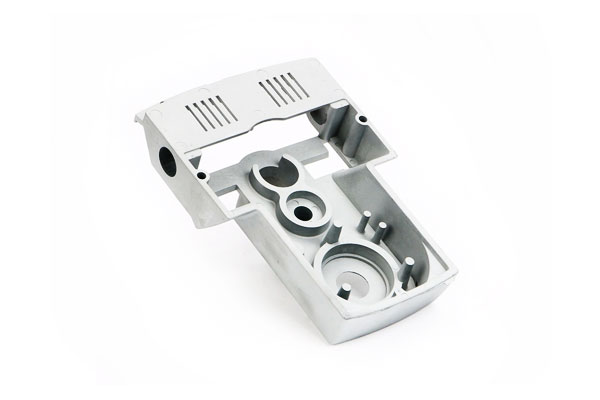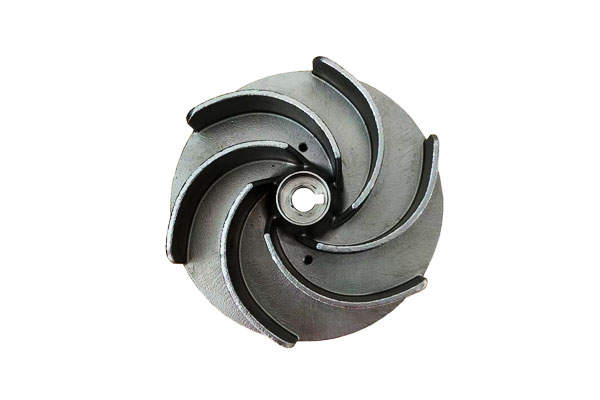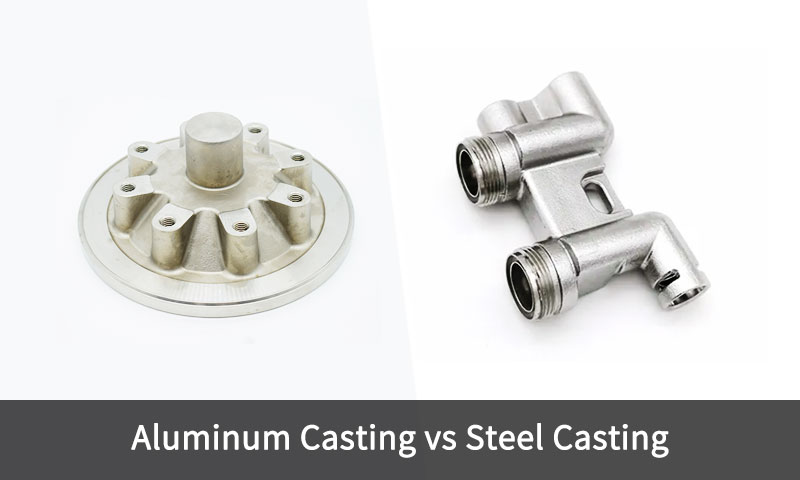1. Zavedenie
Aluminum vs Steel Casting — choosing between these two foundational materials shapes component performance, cost and manufacturability across industries from automotive to energy.
This comparison is not merely about metal chemistry: it encompasses density and stiffness, tepelné správanie, casting process compatibility, secondary processing (tepelné spracovanie, povrchové inžinierstvo), lifecycle cost and application-specific reliability.
Engineers and purchasers must therefore evaluate the entire system—loading, teplota, environment, production volume and finish requirements—before specifying a metal and casting route.
2. Fundamental Material Differences Between Aluminum vs Steel
At the core of aluminum vs. steel casting lies a fundamental metallurgical and physical contrast that directly affects how each material behaves during casting, obrábanie, a služba.
| Majetok | hliník (Napr., Al-I Allays) | Oceľ (Napr., carbon or low-alloy steels) | Inžinierske dôsledky |
| Hustota (g/cm³) | 2.70 | 7.85 | Aluminum is ~65% lighter, offering major weight savings for transportation and aerospace. |
| Roztavenie (° C) | 615–660 | 1425–1540 | Aluminum’s low melting point enables easier casting and lower energy consumption; steel requires specialized furnaces. |
| Tepelná vodivosť (W/m · k) | 120–180 | 40–60 | Aluminum dissipates heat efficiently—ideal for engines, výmenník tepla, a elektronika. |
| Špecifická sila (MPa/ρ) | ~100–150 | ~70–90 | Despite lower absolute strength, aluminum’s strength-to-weight ratio surpasses that of steel. |
| Elastický modul (GPA) | 70 | 200 | Steel is stiffer, providing better rigidity under load and vibration. |
Odpor |
Vynikajúci (forms Al₂O₃ layer) | Variabilný; prone to rust without coatings | Aluminum resists oxidation naturally, while steel needs surface protection (maľba, pokovovanie, or alloying with Cr/Ni). |
| Machináovateľnosť | Vynikajúci | Mierne až ťažké | Aluminum’s softness allows easy machining and shorter cycle times; steel requires tougher tooling. |
| Recyklatalita | >90% recoverable | >90% recoverable | Both materials are highly recyclable, though aluminum’s remelting requires less energy (5% of primary production). |
| Casting Shrinkage (%) | 1.3–1.6 | 2.0–2.6 | Steel shrinks more during solidification, demanding larger allowances and more complex gating/feeding systems. |
| Náklady (približne, USD/kg) | 2.0–3.0 | 0.8–1.5 | Aluminum is more expensive per kilogram, but savings in weight and processing can offset total lifecycle costs. |
3. What Is Aluminum Casting?
hliník odlievanie is the process of shaping molten aluminum or aluminum alloys into complex, near-net-shape components using molds.
It is one of the most widely used metal casting processes globally—accounting for over 50% of all nonferrous castings—due to aluminum’s excellent castability, nízka hustota, a odolnosť proti korózii.

Prehľad
In aluminum casting, roztavený hliník (zvyčajne medzi 680–750°C) is poured or injected into a mold cavity where it solidifies into the desired geometry.
Aluminum’s low melting point and high fluidity make it ideal for both mass-production methods (like die casting) a vysoko presné aplikácie (like investment casting).
Key Features of Aluminum Casting
- Ľahký a vysoký pomer pevnosti k hmotnosti:
Aluminum castings offer excellent mechanical performance while being about Jedna tretina hmotnosti ocele. - Dobrý odolnosť proti korózii:
Tenký, samoliečba aluminum oxide layer (Al₂o₃) protects against oxidation and most atmospheric or marine corrosion. - Vynikajúca tepelná a elektrická vodivosť:
Suitable for applications like výmenník tepla, puzdro, and electric components. - Recyklatalita:
Aluminum can be recycled indefinitely without degradation, reducing production energy by up to 95% compared to primary smelting.
Common Aluminum Casting Processes
| Metóda obsadenia | Popis | Typické aplikácie |
| Odlievanie pod tlakom | High-pressure injection of molten aluminum into steel dies; yields precise, tenkostenné diely. | Automobilové diely (prevodové kryty, zátvorky), spotrebiteľská elektronika. |
| Odlievanie piesku | Molten metal poured into sand molds; suitable for larger, lower-volume parts. | Blok, potrubie, letecké kryty. |
| Investičný casting | Ceramic molds from wax patterns; ideal for fine details and tight tolerances. | Letecké komponenty turbíny, zdravotnícke pomôcky. |
| Trvalé liatie plesní | Reusable metal molds; good surface finish and dimensional control. | Piesty, kolesá, a morské komponenty. |
| Odstredivé odlievanie | Uses centrifugal force to distribute molten metal; hustý, konštrukcia. | Tubes, rukávy, and rings. |
Výhody obsadenia hliníka
- Ľahký: Reduces component weight by 30–50% vs. oceľ, improving fuel efficiency (automobilový) or payload capacity (kozmonautika).
- Energetická účinnosť: Melting aluminum requires 60–70% less energy than steel (570° C vs. 1420° C), lowering processing costs by 20–30%.
- Odpor: Eliminates the need for coatings (Napr., maľba, pozemský) vo väčšine prostredí, reducing maintenance costs by 40–50%.
- High-Volume Viability: Die casting enables production of 1000+ parts/day per machine, meeting consumer goods demand.
Disadvantages of Aluminum Casting
- Nižšia sila: Pevnosť v ťahu (150–400 MPa) is 50–70% lower than high-strength steel, limiting use in heavy-load applications.
- Poor High-Temperature Performance: Retains only 50% of room-temperature strength at 250°C, making it unsuitable for engine exhaust or power plant components.
- Pórovitosť: Die-cast aluminum is prone to gas porosity (from high-pressure injection), restricting heat treatment options (Napr., T6 temper requires vacuum processing).
- Higher Raw Material Cost: Primary aluminum costs $2,500–$3,500/tonne, 2–3x more than carbon steel.
Industrial Applications of Aluminum Casting
Aluminum casting is widely used across multiple industries due to its combination of ľahký dizajn, machináovateľnosť, a odolnosť proti korózii:
- Automobilový priemysel: Blok, prevodovka, kolesá, and suspension arms.
- Letectvo a kozmonautika: Zátvorky, konštrukcia, kompresorové kryty.
- Elektronika: Chladič, motorové puzdrá, prílohy.
- Spotrebný tovar: Spotrebiče, elektrické náradie, nábytok.
- Marine and Renewable Energy: Vrtule, puzdro, a čepele turbíny.
4. What Is Steel Casting?
Steel casting is the process of pouring molten steel into a mold to produce complex, high-strength components that cannot be easily fabricated or forged.
Unlike aluminum, steel has a vyšší bod topenia (≈ 1450–1530°C) and greater tensile strength, robí to ideálnym pre load-bearing and high-temperature applications such as machinery, infrastructure, a generácia energie.

Prehľad
In steel casting, carefully alloyed molten steel is poured into either expendable (pieskovať, investícia) or permanent molds, where it solidifies into a shape close to the final part.
Because steel shrinks significantly upon cooling, precise temperature control, dizajn hradlovania, and solidification modeling sú kritické.
Steel castings are known for their mechanická robustnosť, nárazový odpor, a štrukturálna integrita, particularly under harsh service conditions.
Key Features of Steel Casting
- Exceptional Strength and Toughness:
Yield strengths often exceed 350 MPA, with heat-treated alloys reaching over 1000 MPA. - High-Temperature Capability:
Retains strength and oxidation resistance up to 600–800°C, depending on composition. - Versatile Alloy Selection:
Includes uhlíkové ocele, oceľové ocele, nehrdzavejúce ocele, and high-manganese steels, each tailored for specific environments. - Zvárateľnosť:
Cast steels can be post-processed effectively—machined, zváraný, and heat-treated to enhance performance.
Common Steel Casting Processes
| Metóda obsadenia | Popis | Typické aplikácie |
| Odlievanie piesku | Molten steel poured into bonded sand molds; ideálne pre veľké, komplexné diely. | Telá ventilu, pump, machinery housings. |
| Investičný casting | Ceramic molds formed from wax patterns; yields excellent accuracy and surface finish. | Čepele turbíny, chirurgické nástroje, letecké časti. |
| Odstredivé odlievanie | Rotational force distributes molten steel evenly; produces dense cylindrical components. | Potrubia, vložky, preteky. |
| Odlievanie škrupín | Uses thin resin-coated sand molds; allows higher precision and smoother surfaces. | Malé časti motora, zátvorky. |
| Nepretržité odlievanie | For semi-finished steel products like slabs and billets. | Raw material for rolling and forging. |
Advantages of Steel Casting
- Vynikajúca sila & Tvrdosť: Pevnosť v ťahu (až do 1500 MPA) a nárazová húževnatosť (40–100 J) make it irreplaceable for structural safety (Napr., mostné komponenty, automobilový podvozok).
- Výkonný výkon: Operates reliably at 400–600 ° C (vs. aluminum’s 250°C limit), suitable for jet engine casings and power plant boilers.
- Low Raw Material Cost: Carbon steel costs $800–$1200/tonne, 60–70% less than primary aluminum.
- Odpor: Heat-treated steel (Napr., 4140) has surface hardness up to 500 HB, reducing replacement frequency in abrasive applications by 50–70%.
Disadvantages of Steel Casting
- High Weight: Density 2.7x that of aluminum increases fuel consumption (automobilový) or structural load (buildings).
- High Energy Use: Melting steel requires 25–30 MWh/tonne (vs. 5–7 MWh/tonne for aluminum), increasing processing costs by 40–50%.
- Náchylnosť: Carbon steel rusts in moist environments (miera korózie: 0.5–1,0 mm/rok in salt spray), requiring coatings (Napr., pozemský) that add $1.5–$2.5/kg to costs.
- Poor Machinability: Hardness requires specialized tools, Zvyšujúci sa čas na obrábanie 30–50% vs. hliník.
Industrial Applications of Steel Casting
Steel castings dominate industries demanding sila, trvanlivosť, a tepelný odpor:
- Výstavba & Ťažba: Excavator teeth, drviča, track links.
- Energia & Generovanie energie: Steam turbine casings, telá ventilu, jadrové komponenty.
- Olej & Plyn: Drill heads, pipeline valves, potrubie.
- Preprava: Train couplers, prevodové kryty, heavy-duty engine blocks.
- Letectvo a kozmonautika & Obhajoba: Podvozok, konštrukcia, armor components.
5. Komplexné porovnanie: Hliník vs oceľový odliatok
Process fit and part geometry
- Tenkostenný, komplexný, veľkoobjemové diely: aluminum die casting is optimal (HPDC).
- Veľký, ťažký, load-bearing parts: steel/spheroidal graphite (Vojvodka) iron and cast steels via sand casting are preferred.
- Medium volume with high integrity requirements: low-pressure aluminum or investment casting steels depending on strength needs.
Mechanical performance & po spracovaní
- Tepelné spracovanie: cast steel can be quenched & tempered to obtain high strength and toughness; aluminum alloys have age-hardening routes but reach lower maximum strengths.
- Surface engineering: aluminum readily anodizes; steel can be nitrided, carburized, induction hardened or coated with hard substances (keramika, tvrdý chróm).
Nákladné ovládače (typical considerations)
- Material cost per kg: aluminum raw metal tends to be priced higher per kg than ferrous scrap/steel, but part mass reduces required amount.
- Náradie: die casting dies are expensive (high initial amortization) but low per-part cost at volumes >10k–100k; sand tooling is cheap but per-part labor higher.
- Obrábanie: aluminum machines faster (higher removal rates), lower tool wear; steel requires harder tooling and more machining time—raises total cost especially for small batches.
Výroba & defect modes
- Pórovitosť: HPDC aluminum can develop gas and shrinkage porosity; permanent-mold and low-pressure reduce porosity.
Steel castings can suffer inclusions and segregation; controlled melting and post-HT reduce defects. - Rozmerové ovládanie: die cast aluminum attains tight tolerances (± 0,1–0,3 mm); sand cast steel tolerances are looser (±0.5–2 mm) without post-machining.
Environmentálny & life-cycle
- Recyklácia: both metals are highly recyclable. Recycled aluminum uses a small fraction (~5–10%) of the energy of primary smelting; recycled steel also has large energy savings compared to virgin iron.
- Use-phase: lightweight aluminum can reduce fuel consumption in vehicles — a system-level environmental benefit.
Tabuľka: Aluminum vs Steel Casting — Key Technical Comparison
| Kategória | Hliníkové obsadenie | Odlievanie ocele |
| Hustota (g/cm³) | ~2.70 | ~7.80 |
| Roztavenie (° C / ° F) | 660° C / 1220° F | 1450–1530°C / 2640–2790°F |
| Pevnosť (Ťah / Výnos, MPA) | 130–350 / 70–250 (ako cast); až do 500 Po tepelnom spracovaní | 400–1200 / 250–1000 (v závislosti od stupňa a tepelného spracovania) |
| Tvrdosť (HB) | 30–120 | 120–400 |
| Elastický modul (GPA) | 70 | 200 |
| Tepelná vodivosť (W/m · k) | 150–230 | 25–60 |
| Elektrická vodivosť (% IACS) | 35–60 | 3–10 |
| Odpor | Vynikajúci (vrstva prírodného oxidu) | Variable — requires alloying (Cr, V, Mí) alebo povlak |
| Oxidácia (High-Temp) | Obmedzený (<250° C) | Dobré až vynikajúce (up to 800°C for some alloys) |
| Machináovateľnosť | Vynikajúci (mäkký, easy to cut) | Mierne až chudobné (ťažší, drsný) |
| Odlievateľnosť (Plynulosť & Zhoršenie) | Vysoká plynulosť, nízko zmenšovanie | Lower fluidity, higher shrinkage — needs precise gating |
| Váha | ~65% lighter than steel | Heavy — suitable for structural loads |
Povrchová úprava |
Vyhladiť, good detail reproduction | Rougher surfaces; may need machining or shot blasting |
| Heat Treatment Flexibility | Vynikajúci (T6, T7 tempers) | Široký (žíhanie, zhasnutie, temperovanie, normalizácia) |
| Recyklatalita | >90% recycled efficiently | >90% recyclable but requires higher remelting energy |
| Production Cost | Lower energy, rýchlejšie časy cyklu | Higher melting cost and tool wear |
| Typické tolerancie (mm) | ±0.25 to ±0.5 (tlakové liatie); ±1.0 (odlievanie piesku) | ±0.5–1.5 depending on process |
| Environmental Footprint | Nízky (especially recycled aluminum) | Higher CO₂ and energy footprint due to high melting point |
| Typické aplikácie | Automobilové kolesá, puzdro, letecké časti, spotrebný tovar | Ventily, turbíny, ťažký stroj, štrukturálne komponenty |
6. Záver
Aluminum and steel castings solve different engineering problems.
Aluminum excels where ľahká váha, tepelná vodivosť, surface quality and high production rates matter.
Oceľ (and cast irons) dominate where vysoká sila, tuhosť, odpor, toughness and elevated temperature performance sú potrebné.
Good material selection balances functional requirements, náklady (total life cycle), producibility and finishing.
In many modern designs hybrid solutions appear (steel inserts in aluminum castings, clad or bimetallic components) to exploit the strengths of both metals.
Časté otázky
Čo je silnejšie: cast aluminum or cast steel?
Cast steel is significantly stronger—A216 WCB steel has a tensile strength of 485 MPA, 67% higher than A356-T6 aluminum (290 MPA).
Steel also has far greater toughness and wear resistance.
Can cast aluminum replace cast steel?
Only in applications where weight reduction is prioritized over strength (Napr., automotive non-structural parts).
Steel is irreplaceable for high-load, high-temperature components (Napr., turbína).
Which is more corrosion-resistant: cast aluminum or cast steel?
Cast aluminum is more corrosion-resistant in most environments (miera korózie <0.1 mm/rok) vs. uhlíková oceľ (0.5–1,0 mm/rok).
Stainless steel castings match aluminum’s corrosion resistance but cost 2–3x more.
Which casting process is best for aluminum vs. oceľ?
Aluminum is ideal for die casting (veľkoobjemový) and sand casting (nízkonákladový).
Steel is best for sand casting (veľké časti) a obsadenie investícií (komplexný, high-tolerance components). Die casting is rarely used for steel.


